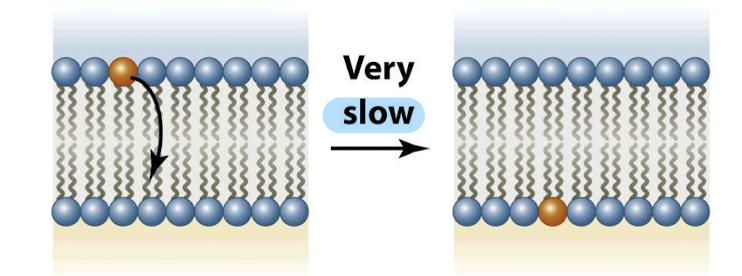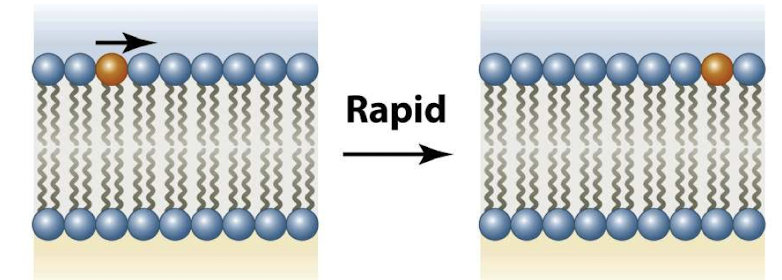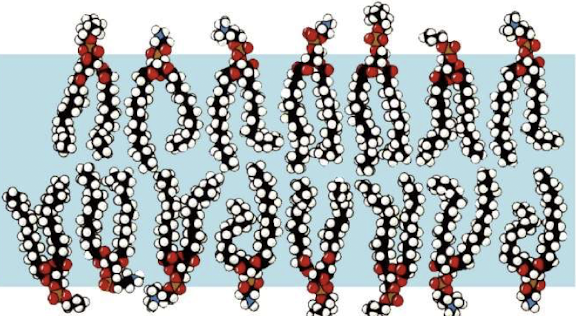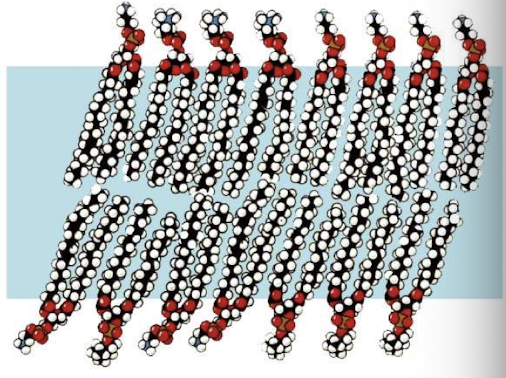Section 1: Lipid Bilayers
1/15
There's no tags or description
Looks like no tags are added yet.
Name | Mastery | Learn | Test | Matching | Spaced |
|---|
No study sessions yet.
16 Terms
Lipids
Associates w/ other molecules
Aggregate to form micelles and bilayers
aggregates form the structural basis for biological membranes
Micelles
Single-tailed amphiphiles form spheroidal or ellipsoidal micelles
Globular aggregates
Hydrocarbon groups are out of contact w/ water
Arrangement
eliminates contact b/w water and hydrophobic tails
permits the solvation of the polar head groups
In micelle, what happens if there are too few lipid molecules
It exposes the hydrophobic core of the micelle to water
In micelle, what happens if there are too many lipid molecules
It would give the micelle an energetically unfavorable hollow center
What happens if there is a very large micelle
Could flatten out to eliminate this hollow center
As a result, there is a decrease of curvature at the flattened surfaced which would generate empty spaces
Micelle structure w/ glycerophospholipid and sphingolipids
Two hydrocarbon tails
rectangular cross section
form large disk-like micelles
resemble extended bimolecular leaflet
Liposomes
Similar to cell membranes; however, there are no proteins embedded, just lipids
sever as models of biological membranes
Formed by suspension of phospholipids
Closed, self-sealing solvent-filled vesicles
Bound by only a single bilayer
Quite stable
absorbed by many cells through fusion w/ plasma membrane
hold promise as vehicles for drug delivery
How can lipsomes be purified
dialysis
gel filtration chromatography
centrifugation
Transverse diffusion (flip-flop)
Transfer of lipid molecules across bilayer
very slow process
rare
hydrated, polar head groups of the lipid have to pass through the anhydrous hydrocarbon core of the bilayer
only half of the membrane does this during several days

Lateral diffusion
Pairwise exchange of neighboring phospholipid molecules in the same bilayer leaflet
lipids are highly mobile
Rapid diffusion

Lipid bilayer viscosity (fluid resistance to flow)
Viscosity depends on saturation and length of the fatty acid
The ability of C-C bonds of the lipid tails to rate allows for constant motion of the lipid bilayer interior
Viscosity of the bilayer increases dramatically when it is closer to the lipid head group
the further away fatty acids are from their head group, the more mobile they are
Rotation of head groups is limited
Lipid bilayer viscosity changes with transition temperature
Lipid bilayer cools below a characteristic transition temperature causing it to become a gel-like solid (fluidity decreases)
low temperatures → stiffening of the hydrocarbon tails
bilayer is thicker in the gel state
Lipid bilayer above the transition temperature causes them to be more mobile
High temps have mobile tails
Bilayer above transition temperature

Bilayer below transition temperature

How does the transition temperature increase with?
chain length of its fatty acid residues
degree of saturation of its fatty acid residues
Temperature ranges b/w 10-40˚C for most biological membranes
Bacteria and cold-blooded animals modify fatty acid compositions of their membrane lipds
this maintains a constant level of fluidity
Cholesterol in lipid bilayers
DO NOT form bilayer
decreases membrane fluidity
rigid steroid ring system in cholesterol interferes w/ the motions of the fatty acid side chains in other membrane lipids
Cholesterol inhibts the ordering of fatty acid side chains by fittinng in between them → this broadens the temperature range of the phase transition